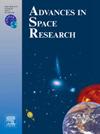探索Khenifiss泻湖的形态,流体动力学和表面沉积物组成:来自摩洛哥南部浅海环境的见解
IF 2.8
3区 地球科学
Q2 ASTRONOMY & ASTROPHYSICS
引用次数: 0
摘要
沿海泻湖被广泛认为是沿海环境中高度动态和复杂的生态系统,在支持人类社区和生物多样性方面发挥着至关重要的作用。然而,这些沿海生态系统面临着来自自然现象和人类活动的诸多挑战。因此,对沿海泻湖动态的全面了解对于保护和确保这些生态系统的可持续性至关重要,这取决于对水动力和沉积学因素和过程之间复杂相互作用的认识。在摩洛哥,Khenifiss泻湖被公认为大西洋沿岸最大的泻湖和最重要的湿地,自1980年以来根据拉姆萨尔公约被指定为保护区。然而,随着沙丘的推进,泥沙向其内部的运移和积聚加剧,泻湖面临着入口和通道变窄的挑战。本文旨在建立形态、水动力条件和表层沉积物组成之间的相关性,根据沉积环境条件对Khenifiss泻湖主河道进行分类。这种分类旨在划定以高、中、低能级为特征的区域。这种分类将通过确定容易再悬浮和沉积的区域,为控制泻湖生态系统的动态相互作用提供有价值的见解。该研究根据水动力条件将Khenifiss泻湖的主河道划分为不同的区域。高能级区域,包括入口区域和最窄的中心部分,具有最高的电流速度,有利于精细材料的再悬浮。中等能级区域,如下游主河道和弯曲段,水流速度适中,细砂优于中砂,同时水流速度降低。包括上游主河道在内的低能级区域,水流速度较慢,水深较浅,有利于细粒和极细粒沉积物的沉积。最后,能量极低且风平浪静的地区不受强流的影响,阻止了沉积物的再加工,并促进了它们的积累。这项研究强调了将沉积学、水动力学和形态计量学分析结合起来作为监测沿海生态系统和了解沿海泻湖形态动力学的一种有价值的方法的重要性。这种方法指导生态系统管理,如有针对性的保护工作、侵蚀控制和栖息地保护,同时也支持明智的沿海发展和适应性管理战略,以确保肯尼菲斯泻湖的长期可持续性和保护。本文章由计算机程序翻译,如有差异,请以英文原文为准。
Exploring morphometry, hydrodynamics, and surface sediment composition in Khenifiss lagoon: Insights from a shallow coastal environment in Southern Morocco
Coastal lagoons are widely recognized as highly dynamic and intricate ecosystems within coastal environments, playing a crucial role in supporting both human communities and biodiversity. However, these coastal ecosystems are confronted with a multitude of challenges stemming from both natural phenomena and human activities. Hence, acquiring a comprehensive understanding of coastal lagoon dynamics is imperative for safeguarding and ensuring the sustainability of these ecosystems, relying on discerning the intricate interplay between hydrodynamic and sedimentological factors and processes. In Morocco, the Khenifiss lagoon is recognized as the largest lagoon and the most significant wetland along the Atlantic coast, designated as a protected area under the Ramsar Convention since 1980. However, the lagoon is confronted with the challenge of inlet and channel narrowing due to heightened sediment transport and accumulation toward its interior, along with dune advancement. This paper aims to establish correlations between morphometry, hydrodynamic conditions, and surface sediment composition to categorize the main channel of Khenifiss lagoon according to sedimentary environmental conditions. This categorization aims to delineate zones characterized by high, moderate, and low energy levels. Such classification will offer valuable insights into the dynamic interactions governing the lagoon’s ecosystem by identifying areas prone to resuspension and deposition. The study categorized the main channel of the Khenifiss lagoon into distinct zones based on hydrodynamic conditions. Areas with high energy levels, including the entrance zone and the narrowest central section, featured the highest current velocities, fostering conditions favoring the resuspension of fine materials. Zones with moderate energy levels, such as the downstream main channel and sinuous sections, exhibited moderate current velocities and a predominance of fine sand over medium sand fractions, along with observed reductions in current velocity. Areas characterized by low energy levels, encompassing the upstream main channel, are marked by slower current velocities and shallow depths, facilitating the deposition of fine and very fine sediment. Finally, areas with very low energy and calm conditions, well-protected from strong currents, prevent the reworking of sediments and facilitate their accumulation. This study highlights the importance of integrating sedimentological, hydrodynamic, and morphometric analyses as a valuable approach for monitoring coastal ecosystems and understanding the morphodynamics of coastal lagoons. This approach guides ecosystem management, such as targeted conservation efforts, erosion control, and habitat protection, while also supporting informed coastal development and adaptive management strategies to ensure the long-term sustainability and protection of the Khenifiss lagoon.
求助全文
通过发布文献求助,成功后即可免费获取论文全文。
去求助
来源期刊

Advances in Space Research
地学天文-地球科学综合
CiteScore
5.20
自引率
11.50%
发文量
800
审稿时长
5.8 months
期刊介绍:
The COSPAR publication Advances in Space Research (ASR) is an open journal covering all areas of space research including: space studies of the Earth''s surface, meteorology, climate, the Earth-Moon system, planets and small bodies of the solar system, upper atmospheres, ionospheres and magnetospheres of the Earth and planets including reference atmospheres, space plasmas in the solar system, astrophysics from space, materials sciences in space, fundamental physics in space, space debris, space weather, Earth observations of space phenomena, etc.
NB: Please note that manuscripts related to life sciences as related to space are no more accepted for submission to Advances in Space Research. Such manuscripts should now be submitted to the new COSPAR Journal Life Sciences in Space Research (LSSR).
All submissions are reviewed by two scientists in the field. COSPAR is an interdisciplinary scientific organization concerned with the progress of space research on an international scale. Operating under the rules of ICSU, COSPAR ignores political considerations and considers all questions solely from the scientific viewpoint.
 求助内容:
求助内容: 应助结果提醒方式:
应助结果提醒方式:


